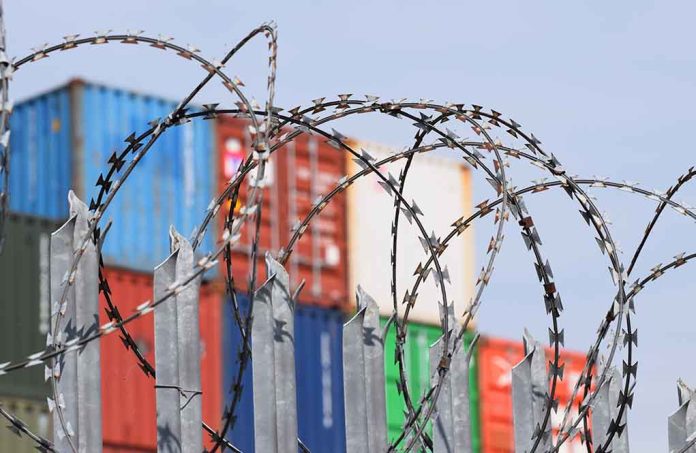
President Trump imposes hefty tariffs on Canada, Mexico, and China, sparking international trade tensions and retaliation.
Top Takeaways
- President Trump imposes 25% tariffs on imports from Canada and Mexico, and 10% on China, citing national security concerns.
- Tariffs aim to combat illegal immigration and drug trafficking, particularly fentanyl.
- Canada and Mexico announce retaliatory tariffs on U.S. goods in response.
- Trade experts warn of potential economic repercussions in the U.S.
- Trump suggests possible increased tariffs on the European Union to strengthen the U.S. economy.
Trump’s Tariff Strategy Unveiled
President Donald J. Trump has imposed significant tariffs on imports from Canada, Mexico, and China, citing a national emergency due to illegal immigration and drug trafficking. The White House announced a 25% tariff on imports from Canada and Mexico, with a lower 10% tariff on energy resources from Canada. China faces a 10% tariff across the board. The president aims to hold these nations accountable for their perceived failure to curb illegal immigration and the flow of dangerous drugs, particularly fentanyl, into the United States.
The administration’s decision stems from concerns over national security and public health. The White House fact sheet highlights alliances between Mexican drug trafficking organizations and the Mexican government, providing safe havens for cartels. According to the administration, there is also growing evidence of Mexican cartels operating drug synthesis labs in Canada, further complicating the cross-border drug trade issue.
Economic Leverage and Trade Deficits
The Trump administration is leveraging the United States’ economic position to secure borders and combat drug trafficking. Trade accounts for a significant portion of the GDP for Canada, Mexico, and China, while it represents only 24% of U.S. GDP. This disparity gives the U.S. considerable economic leverage in these trade disputes. The U.S. trade deficit in goods exceeded $1 trillion in 2023, a figure the administration aims to address through these tariffs.
President Trump’s decision to use tariffs as a tool to protect national interests and ensure Americans’ safety aligns with his campaign promises to address illegal immigration and drug trafficking. The administration believes that economic pressure will force these countries to take more decisive action on these critical issues.
International Backlash and Retaliation
The imposition of these tariffs has not gone unanswered. Canada announced retaliatory tariffs of 25% on U.S. imports, affecting C$155 billion ($107 billion) worth of American goods. These counter-tariffs will target products such as beer, wine, bourbon, fruits, clothing, and household appliances. Canadian Prime Minister Justin Trudeau warned that these measures could risk American jobs and increase costs for U.S. consumers.
Similarly, Mexican President Claudia Sheinbaum ordered retaliatory tariffs in response to U.S. actions. Mexico’s measures include tariffs ranging from 5% to 20% on U.S. imports like pork, cheese, fresh produce, and steel, with the auto industry initially exempt. Mexican Economy Minister Marcelo Ebrard criticized the U.S. tariffs as a violation of the U.S.-Mexico-Canada Agreement (USMCA).
“I’ve instructed my economy minister to implement the plan B we’ve been working on, which includes tariff and non-tariff measures in defense of Mexico’s interests,” said Sheinbaum in a statement.
Potential Economic Impacts
Economic experts warn of potential far-reaching consequences. A 25% universal tariff could lead to a 12% drop in Mexican exports and a 4% decrease in Mexico’s GDP in 2025. The impact on the U.S. economy remains to be seen, but there are concerns about increased costs for American consumers and potential job losses in industries reliant on international trade.
President Trump has also hinted at increased tariffs on the European Union, suggesting a broader strategy to reshape global trade relationships in favor of the United States. As the situation develops, the international community watches closely, with many wondering about the long-term implications of these aggressive trade measures on global economic stability and diplomatic relations.
Jaime Dimon of $JPM on the question of whether tariffs will cause inflation: "I mean, get over it. National security trumps a little bit more inflation." pic.twitter.com/IjS55Ldpqn
— unusual_whales (@unusual_whales) February 2, 2025






















